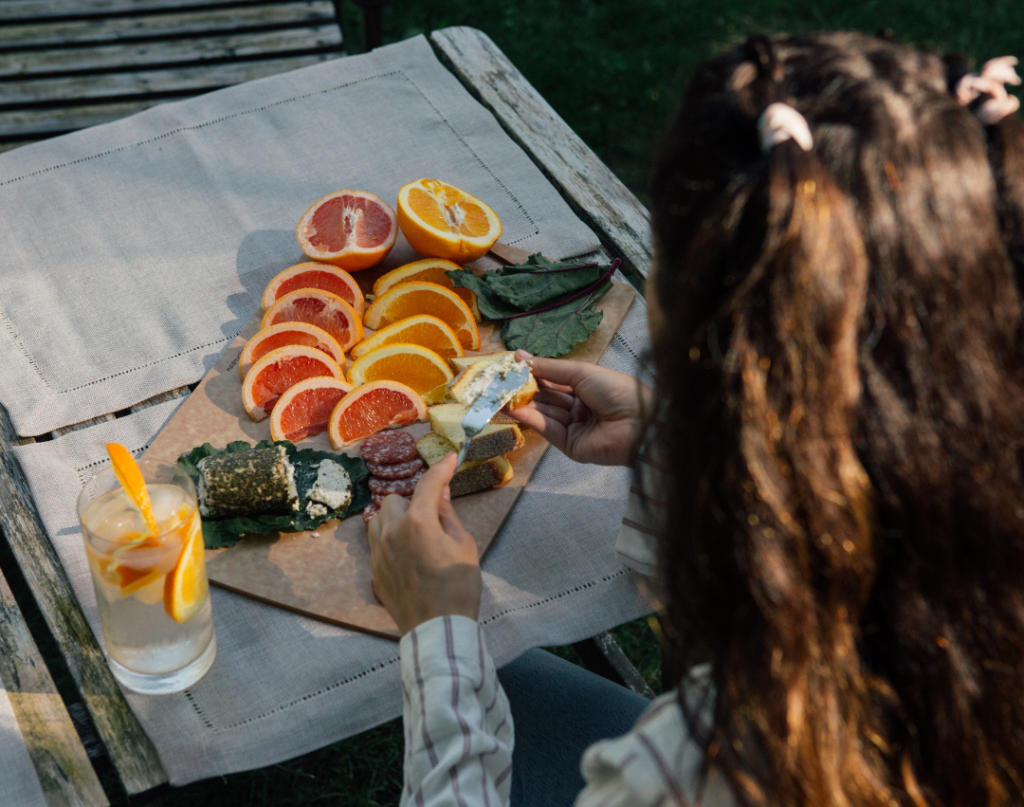Are you looking for new ways to involve your child in the kitchen, methods to expose your little one to new foods, or an easy meal idea? Charcuterie boards are not only trendy, delicious, and beautiful to look at, but they are also a fun way to offer your child new or unfamiliar foods in a novel format. Depending on how adventurous your little one is, their role in creating and experiencing the charcuterie board can be tailored to their comfort level.
- Do you have a problem feeding a little one who struggles when any new food is on the table or placed on their plate? Instead of making the board for them, you can have them help you make the board for the rest of the family to enjoy. Provide some foods they are familiar with and give them a tool to help them transfer the foods onto your desired platter. You can let them pick which tools to use and which platter (cutting boards, serving platters, or even cupcake tins and ice trays work).
- If you have a picky eater who sometimes tolerates new foods on their plate but rarely decides to eat them, they may be ready to help with transferring items to the platter using their fingers. Again, be sure some items on the plate will be familiar. During the mealtime you can let them know they don’t have to eat anything–it’s ok to just look, touch, and smell. You can model smelling foods, touching by squishing, tearing, or rubbing between your fingers or across your lips. Remember to use descriptive and neutral language to describe foods like “this one is hard and bumpy on my lips” instead of “it tastes really good.”
- If you have a child somewhere along the spectrum of mildly selective to being an adventurous eater, you can involve them every step of the way! You can talk to them about what a charcuterie board is and together pick out some special new ingredients to try at the grocery store. Help them arrange foods in sections on a platter, tray, or plate. Then at mealtime, talk about the different flavors helping them add new descriptive words to their vocabulary like peppery, sour, earthy, nutty, buttery, creamy, crunchy, smooth, etc. Again, keep language focused on the foods and their properties instead of liking/disliking comments. If we tend to use words like “tastes weird” we can redirect to instead say “oh yeah it tastes different. Kind of nutty. I think this is a big flavor! Do you think it is a big or small flavor?” or “It’s ok if a food tastes different to us, it means we are still learning about the food.”
When you plan your child’s charcuterie boards, it’s important to think of foods that match your child’s skill level. Instead of the sometimes chewy prosciutto or salami we might see on a typical meat and cheese board at a restaurant, we may want to instead choose easier-to-chew options like shredded chicken and soft deli meats like turkey or ham. You can include cheese, dips, new crackers, roasted veggies, fruits (freeze-dried, dehydrated, or fresh), or nuts. We would love to see any special creations you and your children create! Be sure to tag us in a photo @clubhousefeeding to share your unique combination!
Written by Bianca Roe, OTD, OTR/L, RDN, LDN


